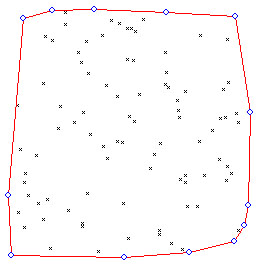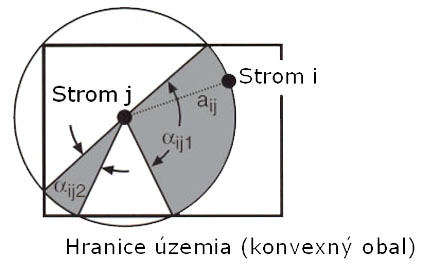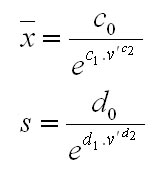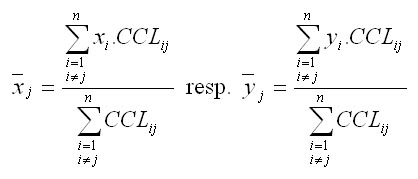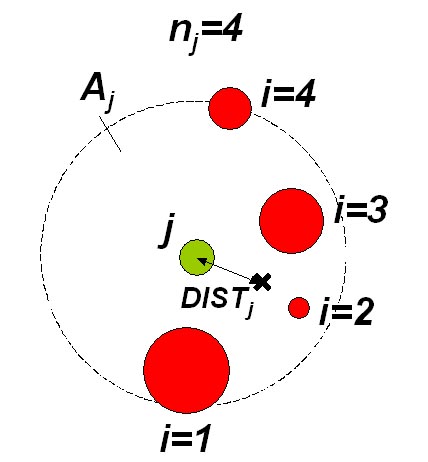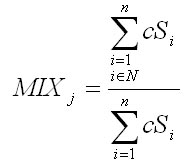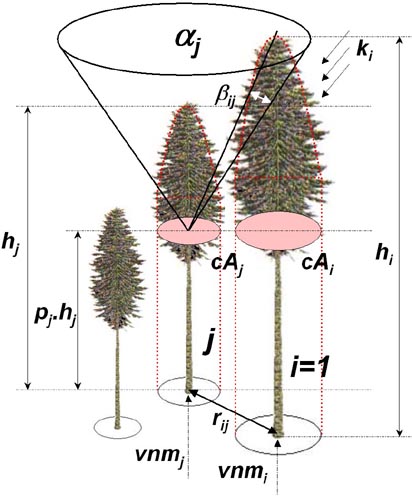
Figure 1 Principle of calculating index CCL
The model of crown competition for light represents the basic element of the quantification of the competition pressure of the trees. The model is based on the calculation of the index CCL (crown competition light). The principle of the index is shown in Figure 1. First, competition angles Betaij for each assessed tree and its potential competitors are determined. The angle Betaij is based on the competition light cone, which is tree-species-specific. The cone is reversed, while its vertex is placed at a specific relative height (p) within the tree. The sides of the lateral area of the cone form a specific angle (Alfa). The parameters of the cone are published in Fabrika (2005). In the case of light-demanding tree species (pine, oak), the vertex of the cone is placed in higher parts of the stem, and the fork angle (Alfa) is greater than for shade-bearing or indifferent species (beech, fir, spruce). The angle Betaij is determined for the trees (competitors) with the crown occurring inside the light cone. It is defined as an angle between the lateral area of the cone and the join of the cone vertex with the top of the competitor. Figure 1 presents how the competition angle is calculated. Its magnitude can be calculated from the height of the assessed tree (hj), elevation of the foot of the assessed tree (vnmj), competitor tree height (hi), elevation of the competitor treefoot (vnmi), and the distance between the center lines of both stems (rij) using the trigonometrical principles:

These angles (given in radian measures) are then reduced by the ratio of crown basal areas of the competitor (cAi) to the assessed tree (cAj) at the height of the cone vertex, and by the transmission coefficient of the competitor crown (ki) according to Ellenberg (1963). Afterwards, they are merged into a cumulated competition index. Transmission coefficients stand for tree-species-specific resistance to light permeability (spruce 0.8, fir 1.0, pine 0.2, beech 1.0, oak 0.6). The transmission coefficient of dead trees is equal to 0.01. Crown basal areas (cAi, cAj) are calculated as circle areas, while their radii are derived from crown shapes. If the light cone vertex is situated in the sunlit part of the crown, the radius is calculated using the distance between the basal area and the top of the tree for argument x:
xi = (1 - pj) . hj resp. xi = (vnmi + hi) - (vnmj + pj . hj)
In cases when the light cone vertex is placed within the shaded part of the crown or below the crown, the largest tree crown radius is used. The shapes of crown basal areas are marked in Figure 1 by red dotted lines. Index CCL is equal to the sum of all angles:

